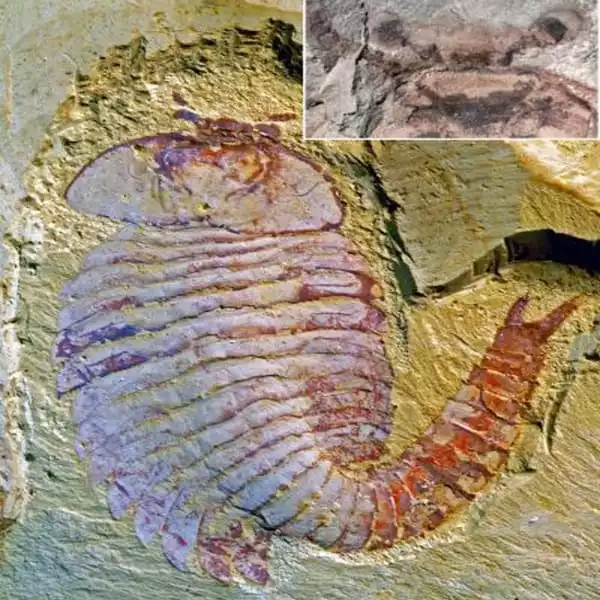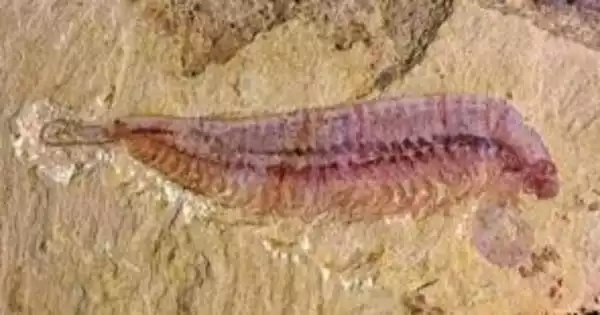A new fossil has been discovered that reveals the origin of gills in arthropods. David Legg, a University of Manchester research fellow, and a team of international scientists from China, Switzerland, and Sweden have announced the discovery of a new fossil that reveals the origin of gills in arthropods.
Arthropods, which include creepy crawlies such as spiders and woodlice, are the largest phylum in the animal kingdom and can be found anywhere from the deepest ocean trench to the summit of Mount Everest.
Arthropods can feed in a variety of ways. They are classified as carnivores, herbivores, detritus feeders, filter feeders, and parasites, with subcategories within each. Typically, paired appendages around the mouth are used for collecting and handling food and are usually specialized according to the animal’s diet.
According to new research, the newest member of the group is Erratus sperare, a 520-million-year-old (roughly ten times the age of the dinosaurs) organism. Erratus sperare was discovered in the Chengjiang Fossil Site, a UNESCO World Heritage Site in Yunnan, China. The Chengjiang Fossil Site preserves an ancient underwater ecosystem that included relatives of well-known arthropod fossils such as trilobites and anomalocarids.
Thanks to this new fossil, Erratus sperare, we now have a much clearer idea. These gills were also likely to evolve into insect wings and the lungs of terrestrial arthropods like spiders, making them a significant innovation.
Dr. David Legg
Modern water-dwelling arthropods have biramous limbs, or legs with two parts: one for breathing and one for walking, but how such specialized limbs evolved is unknown. Some of the earliest fossil arthropods, such as Anomalocaris, had swimming flaps that may have doubled as gills, but researchers didn’t know how arthropods transitioned from these specialized flaps to modern biramous limbs until now.
Erratus sperare bridges the gap between arthropods that used such specialized flaps and arthropods with biramous limbs. It has both legs and flaps. Erratus is a genus of extinct marine arthropods from the Cambrian period of China. Erratus sperare is its only species. Erratus is a transitional species between lobopodians and true arthropods, and its discovery has helped scientists understand the early evolution of arthropod trunk appendages. Some stem-arthropods, such as radiodonts, lacked legs in favor of flap-like appendages that allowed them to swim. Erratus, on the other hand, have not only flaps but also primitive legs. It also supported the theory that the gills of aqautic arthropods probably evolved into the wings and lungs of terrestrial arthropods later in the Paleozoic.

Dr. David Legg, one of the study’s authors, stated, “Fish aren’t the only organisms that have gills! Arthropods have gills as well… They only have them on their legs. When it came to arthropods, however, we had no idea where these gills came from.
“Thanks to this new fossil, Erratus sperare, we now have a much clearer idea.” These gills were also likely to evolve into insect wings and the lungs of terrestrial arthropods like spiders, making them a significant innovation.”
Erratus was a member of the Chengjiang Biota, which existed 520 million years ago during the Cambrian period. The area was a tropical region with sea-level changes and tectonic activity at the time. The majority of the fauna was primarily benthic and was most likely buried by turbidity currents. The biota includes brachiopods, ctenophores, phoronids, and other arthropods.
Myllokunmingia, an early chordate that may be one of the oldest agnathans, is one of the most important creatures discovered at the site (jawless fish). The site also contains more enigmatic fauna, such as Yunnanozoon lividum, which could be a very early hemichordate or chordate, Eldonia, which could be a holothurian, siphonophoran, or other cnidarians, and Dinomischus, a very rare stalked animal that could be an echinoderm.
















